MicroRNA-7 targets Nod-like receptor protein 3 inflammasome to modulate neuroinflammation in the pathogenesis of Parkinson's disease
- PMID: 27084336
- PMCID: PMC4833896
- DOI: 10.1186/s13024-016-0094-3
MicroRNA-7 targets Nod-like receptor protein 3 inflammasome to modulate neuroinflammation in the pathogenesis of Parkinson's disease
Abstract
Background: α-Synuclein (α-Syn), a pathological hallmark of Parkinson's disease (PD), has been recognized to induce the production of interleukin-1β in a process that depends, at least in vitro, on nod-like receptor protein 3 (NLRP3) inflammasome in monocytes. However, the role of NLRP3 inflammasome activation in the onset of PD has not yet been fully established.
Results: In this study, we showed that NLRP3 inflammasomes were activated in the serum of PD patients and the midbrain of PD model mice. We further clarified that α-syn activated the NLRP3 inflammasome through microglial endocytosis and subsequent lysosomal cathepsin B release. Deficiency of caspase-1, an important component of NLRP3 inflammasome, significantly inhibited α-syn-induced microglia activation and interleukin-1β production, which in turn alleviated the reduction of mesencephalic dopaminergic neurons treated by microglia medium. Specifically, we demonstrated for the first time that Nlrp3 is a target gene of microRNA-7 (miR-7). Transfection of miR-7 inhibited microglial NLRP3 inflammasome activation whereas anti-miR-7 aggravated inflammasome activation in vitro. Notably, stereotactical injection of miR-7 mimics into mouse striatum attenuated dopaminergic neuron degeneration accompanied by the amelioration of microglial activation in MPTP-induced PD model mice.
Conclusions: Our study provides a direct link between miR-7 and NLRP3 inflammasome-mediated neuroinflammation in the pathogenesis of PD. These findings will give us an insight into the potential of miR-7 and NLRP3 inflammasome in terms of opening up novel therapeutic avenues for PD.
Keywords: NLRP3 inflammasome; Neuroinflammation; Parkinson’s disease; microRNA-7; α-Synuclein.
Figures
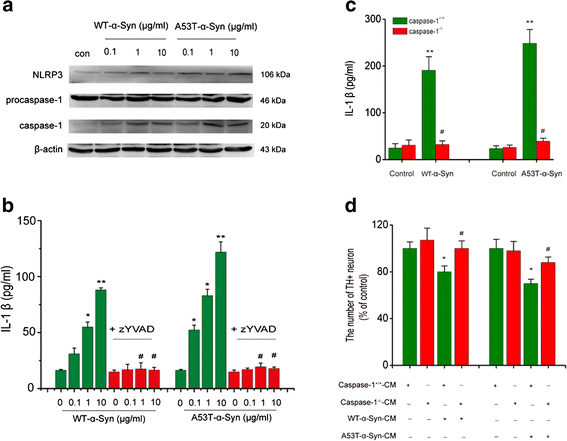
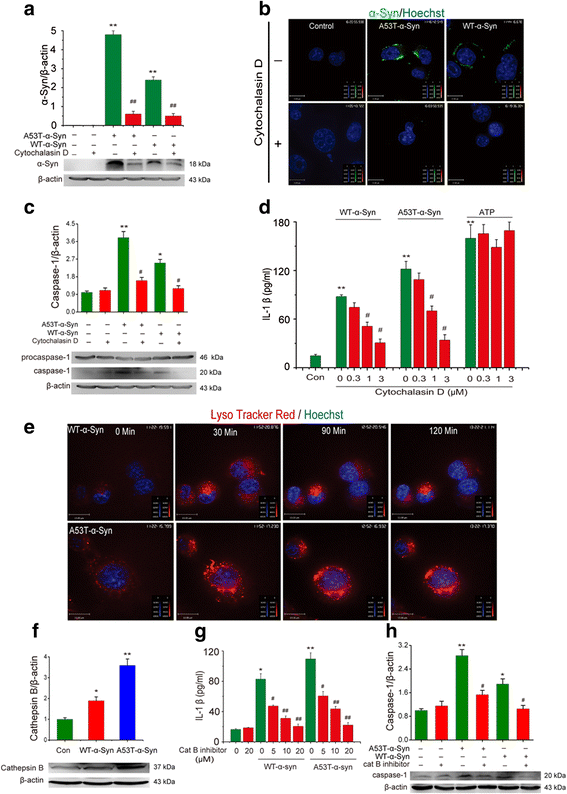
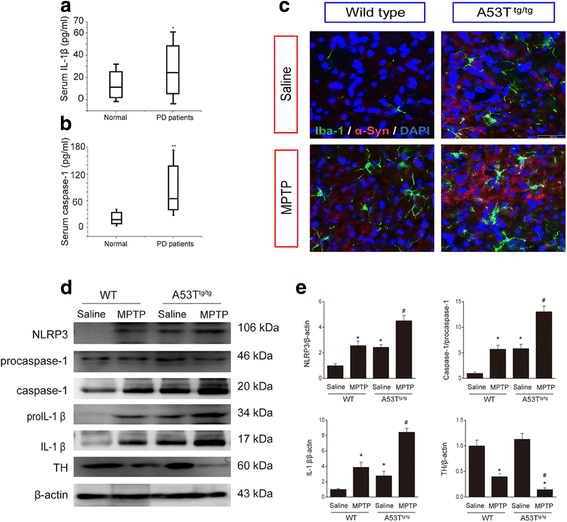
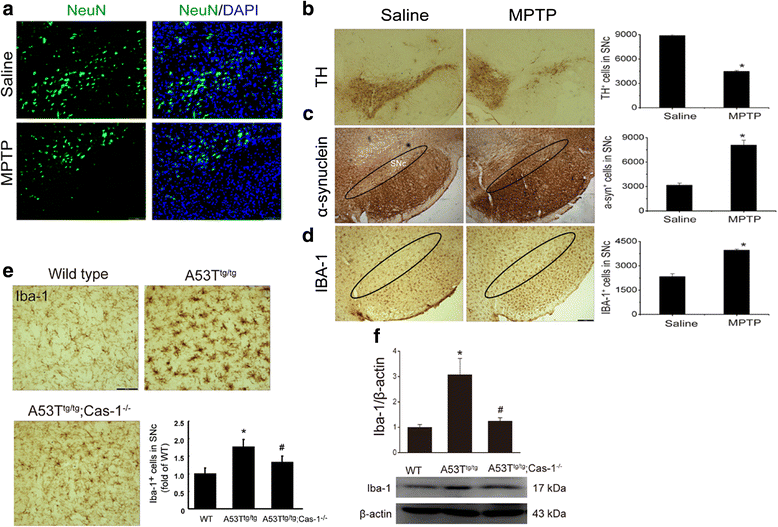
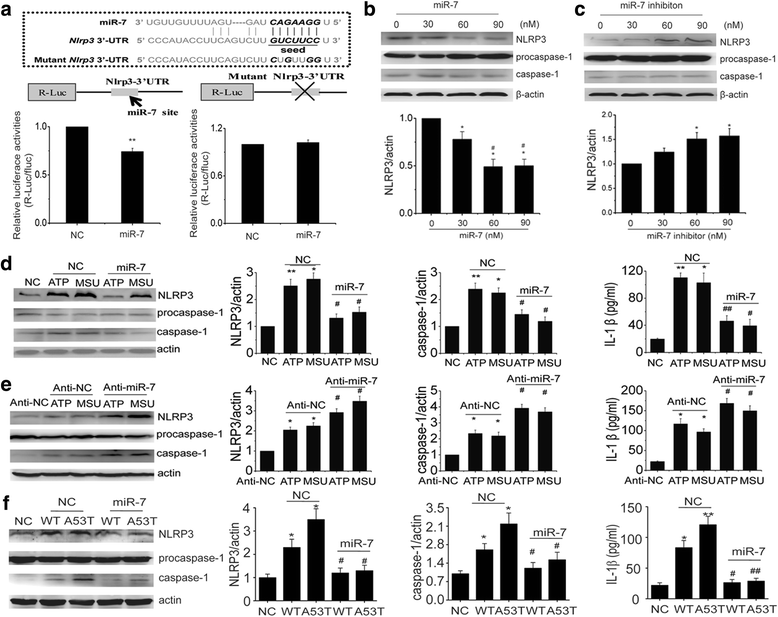
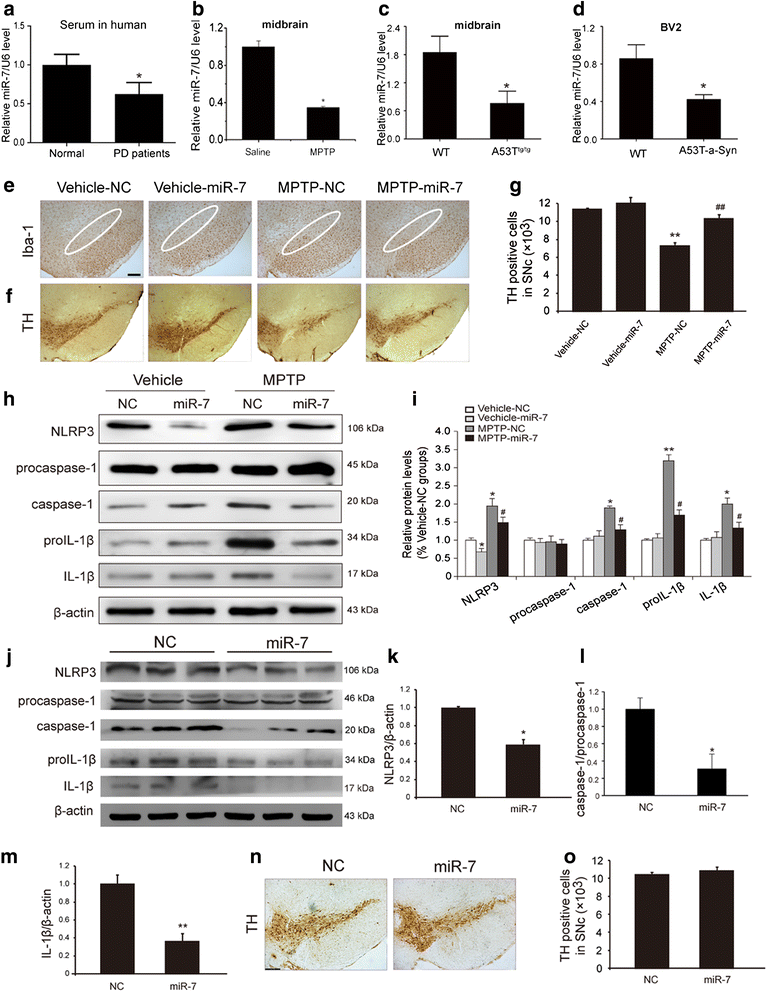
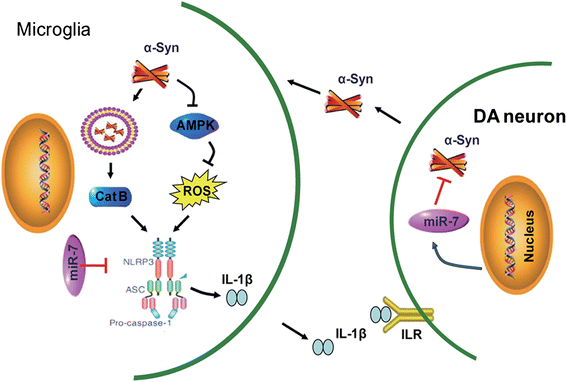
Similar articles
-
MPTP-driven NLRP3 inflammasome activation in microglia plays a central role in dopaminergic neurodegeneration.Cell Death Differ. 2019 Jan;26(2):213-228. doi: 10.1038/s41418-018-0124-5. Epub 2018 May 21. Cell Death Differ. 2019. PMID: 29786072 Free PMC article.
-
MicroRNA-30e regulates neuroinflammation in MPTP model of Parkinson's disease by targeting Nlrp3.Hum Cell. 2018 Apr;31(2):106-115. doi: 10.1007/s13577-017-0187-5. Epub 2017 Dec 22. Hum Cell. 2018. PMID: 29274035 Free PMC article.
-
Dopamine signaling modulates microglial NLRP3 inflammasome activation: implications for Parkinson's disease.J Neuroinflammation. 2022 Feb 16;19(1):50. doi: 10.1186/s12974-022-02410-4. J Neuroinflammation. 2022. PMID: 35172843 Free PMC article.
-
Targeting Microglial α-Synuclein/TLRs/NF-kappaB/NLRP3 Inflammasome Axis in Parkinson's Disease.Front Immunol. 2021 Oct 8;12:719807. doi: 10.3389/fimmu.2021.719807. eCollection 2021. Front Immunol. 2021. PMID: 34691027 Free PMC article. Review.
-
Targeting the microglial NLRP3 inflammasome and its role in Parkinson's disease.Mov Disord. 2020 Jan;35(1):20-33. doi: 10.1002/mds.27874. Epub 2019 Nov 4. Mov Disord. 2020. PMID: 31680318 Review.
Cited by
-
Biomarkers and the Role of α-Synuclein in Parkinson's Disease.Front Aging Neurosci. 2021 Mar 23;13:645996. doi: 10.3389/fnagi.2021.645996. eCollection 2021. Front Aging Neurosci. 2021. PMID: 33833675 Free PMC article.
-
Mechanism and Therapeutic Prospect of miRNAs in Neurodegenerative Diseases.Behav Neurol. 2023 Nov 23;2023:8537296. doi: 10.1155/2023/8537296. eCollection 2023. Behav Neurol. 2023. PMID: 38058356 Free PMC article. Review.
-
The MicroRNA Centrism in the Orchestration of Neuroinflammation in Neurodegenerative Diseases.Cells. 2019 Oct 2;8(10):1193. doi: 10.3390/cells8101193. Cells. 2019. PMID: 31581723 Free PMC article. Review.
-
The upregulation of NLRP3 inflammasome in dorsal root ganglion by ten-eleven translocation methylcytosine dioxygenase 2 (TET2) contributed to diabetic neuropathic pain in mice.J Neuroinflammation. 2022 Dec 16;19(1):302. doi: 10.1186/s12974-022-02669-7. J Neuroinflammation. 2022. PMID: 36527131 Free PMC article.
-
Role of exosomes in the pathogenesis of inflammation in Parkinson's disease.Neural Regen Res. 2022 Sep;17(9):1898-1906. doi: 10.4103/1673-5374.335143. Neural Regen Res. 2022. PMID: 35142665 Free PMC article. Review.
References
Publication types
MeSH terms
Substances
LinkOut - more resources
Full Text Sources
Other Literature Sources
Medical
Molecular Biology Databases
Miscellaneous

